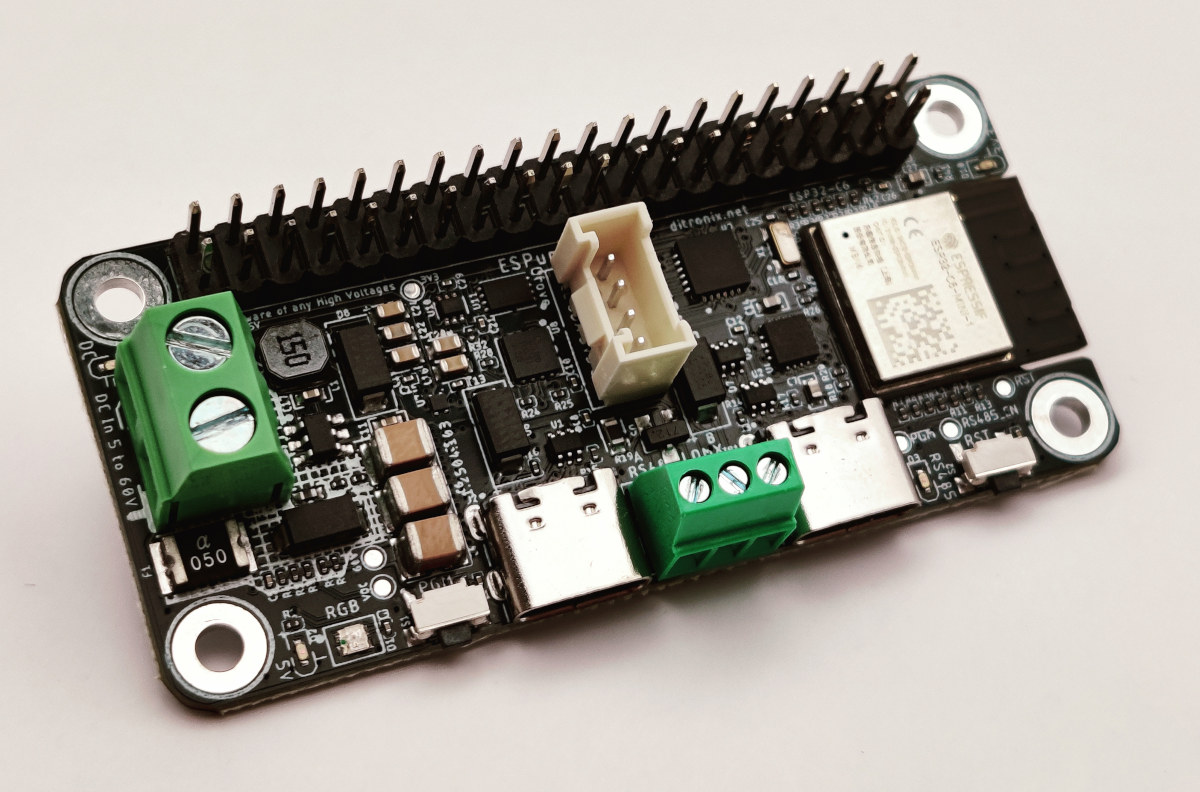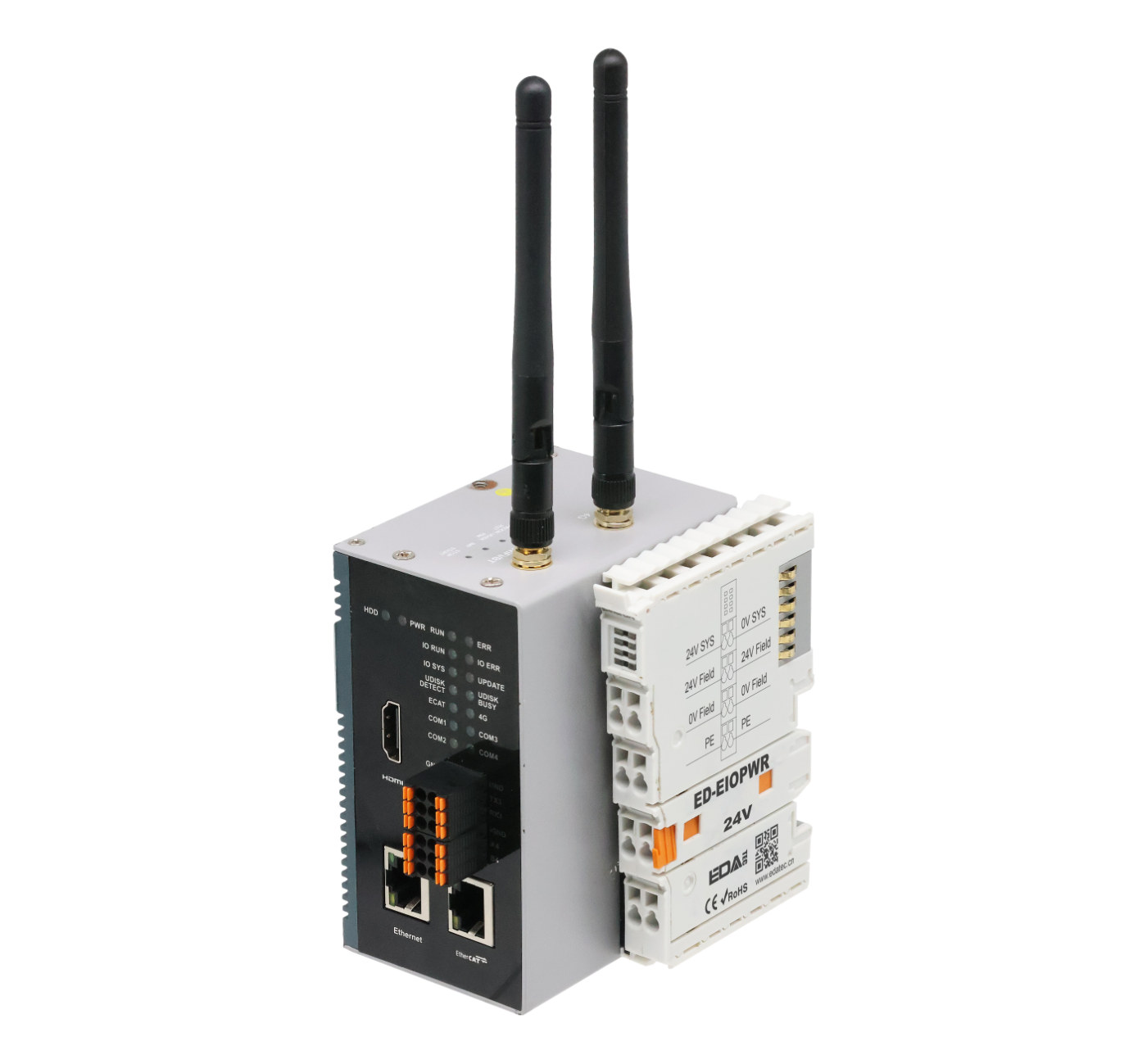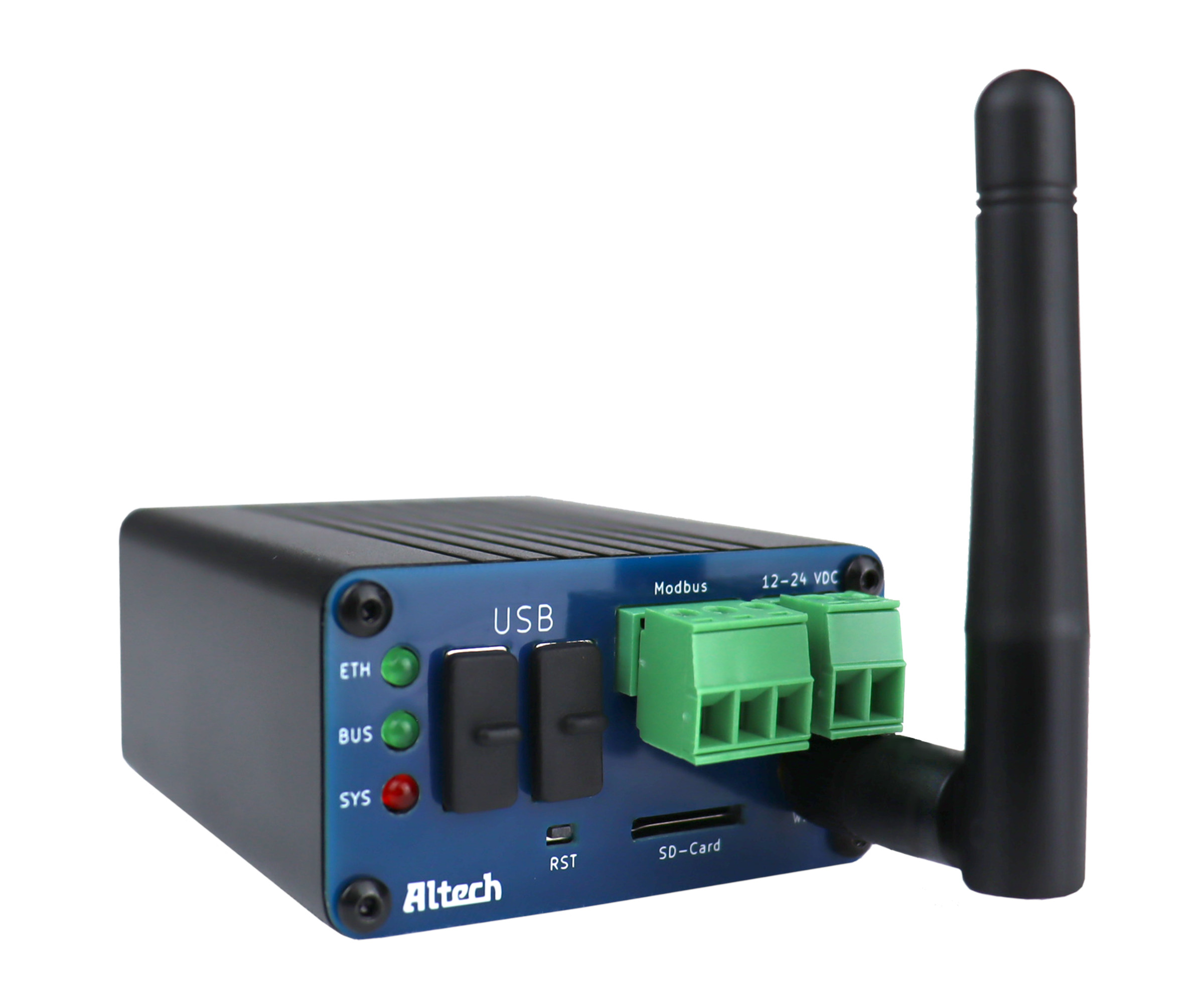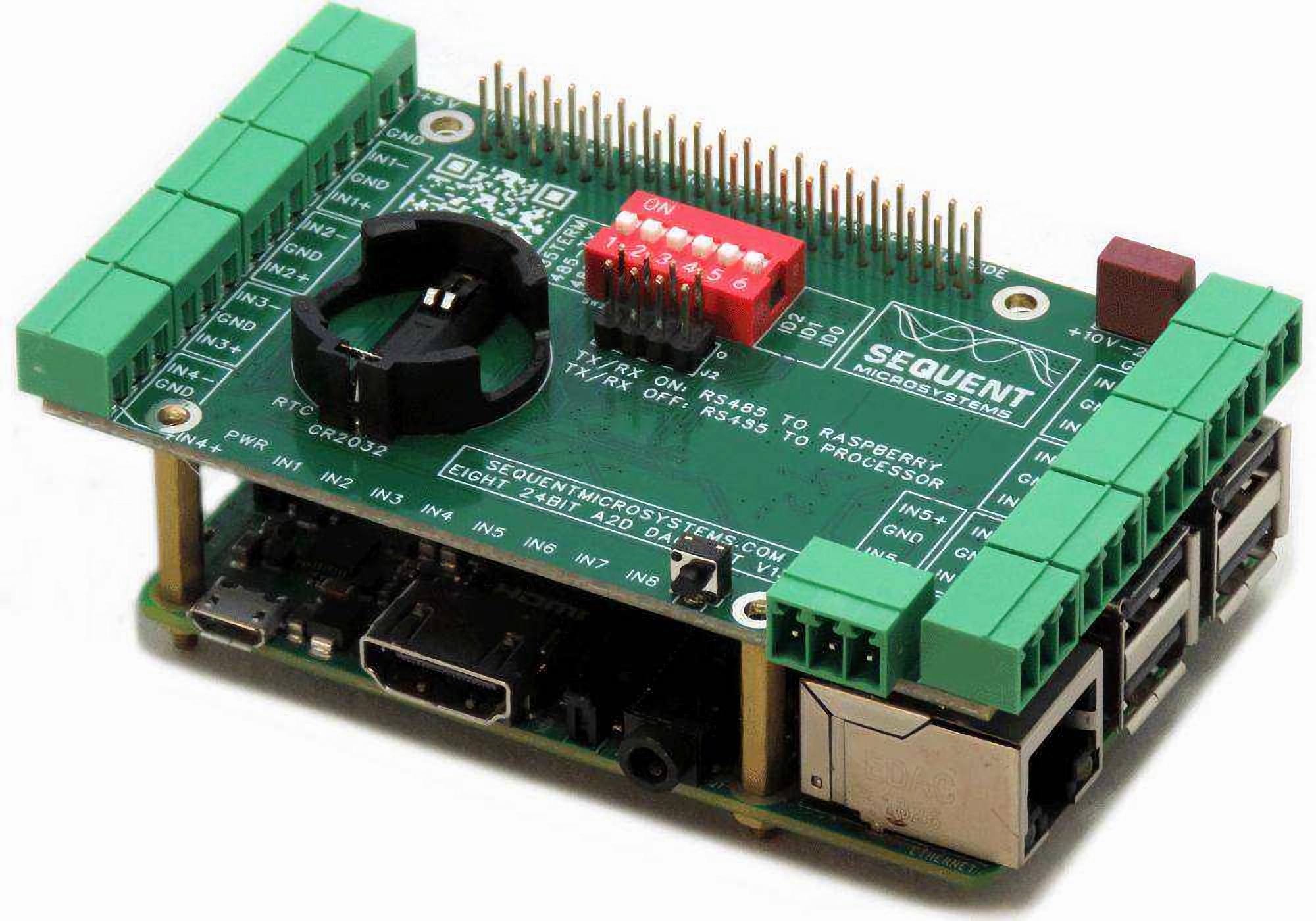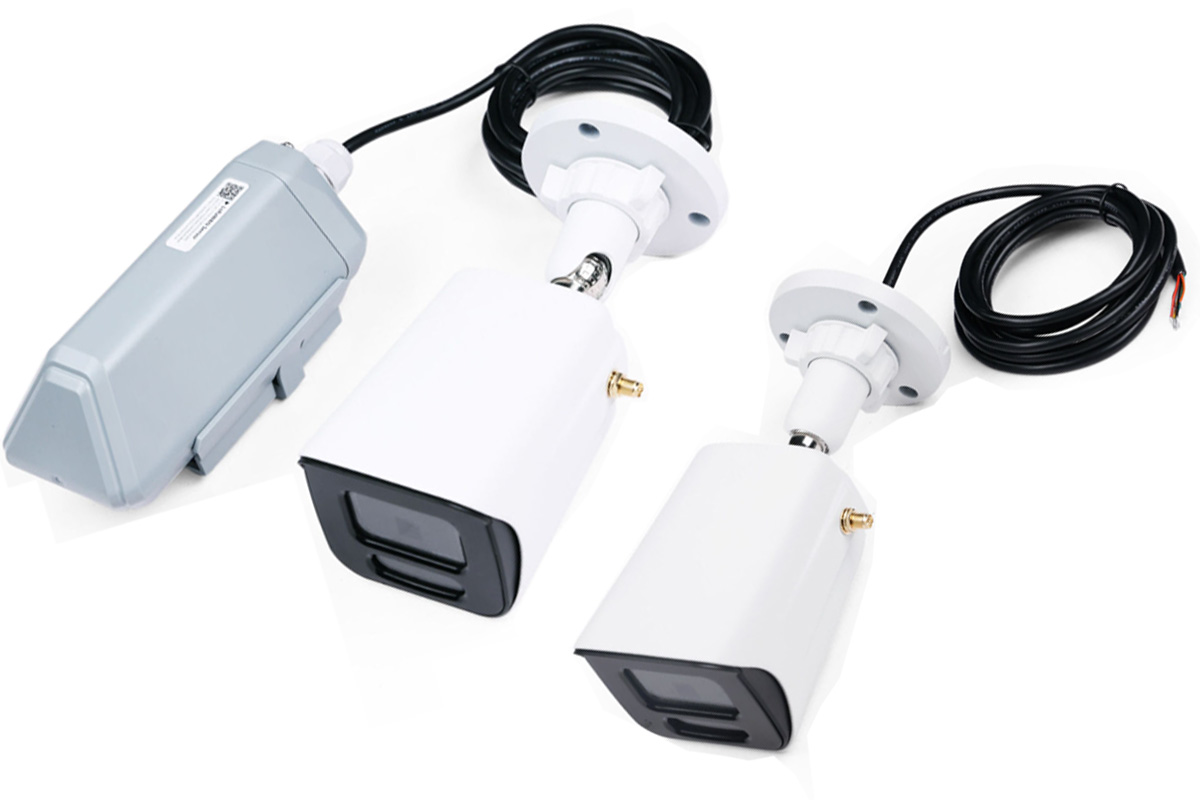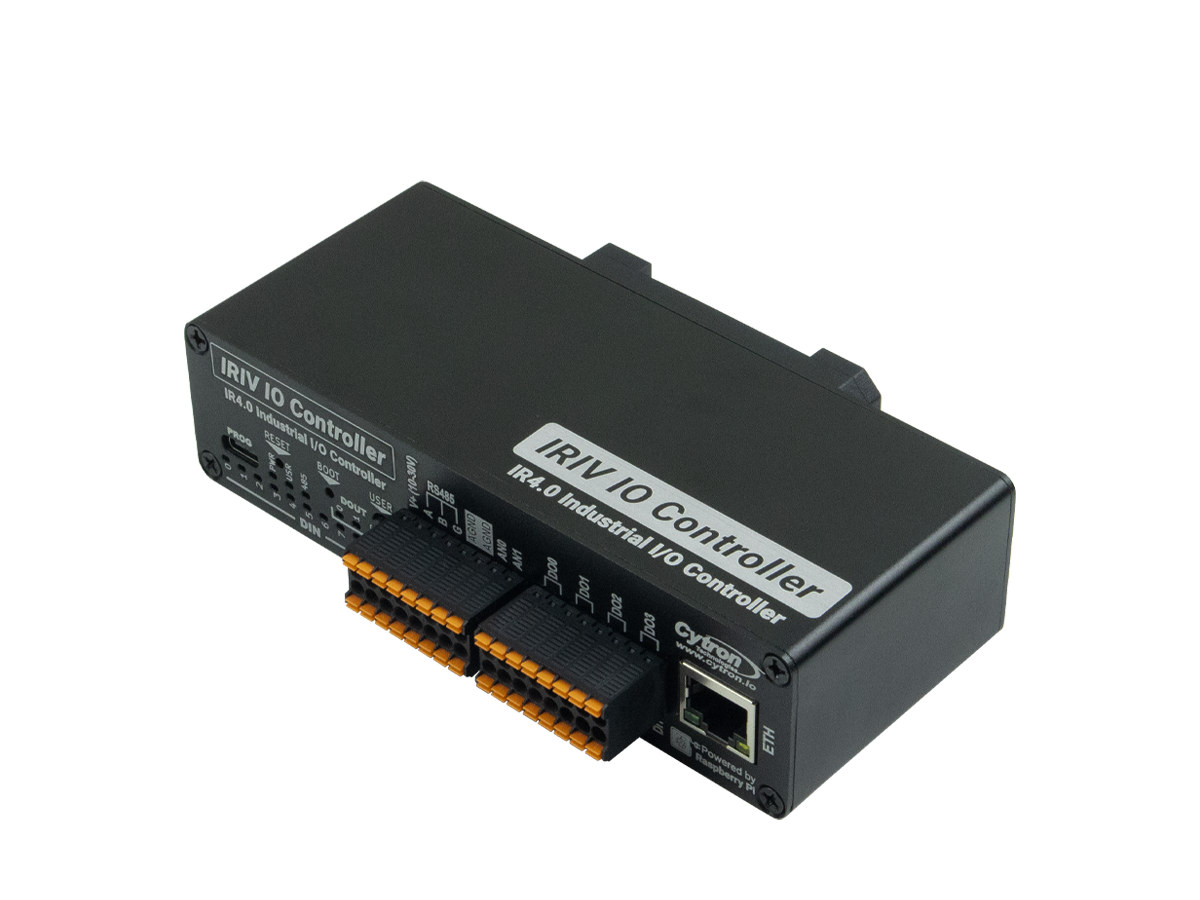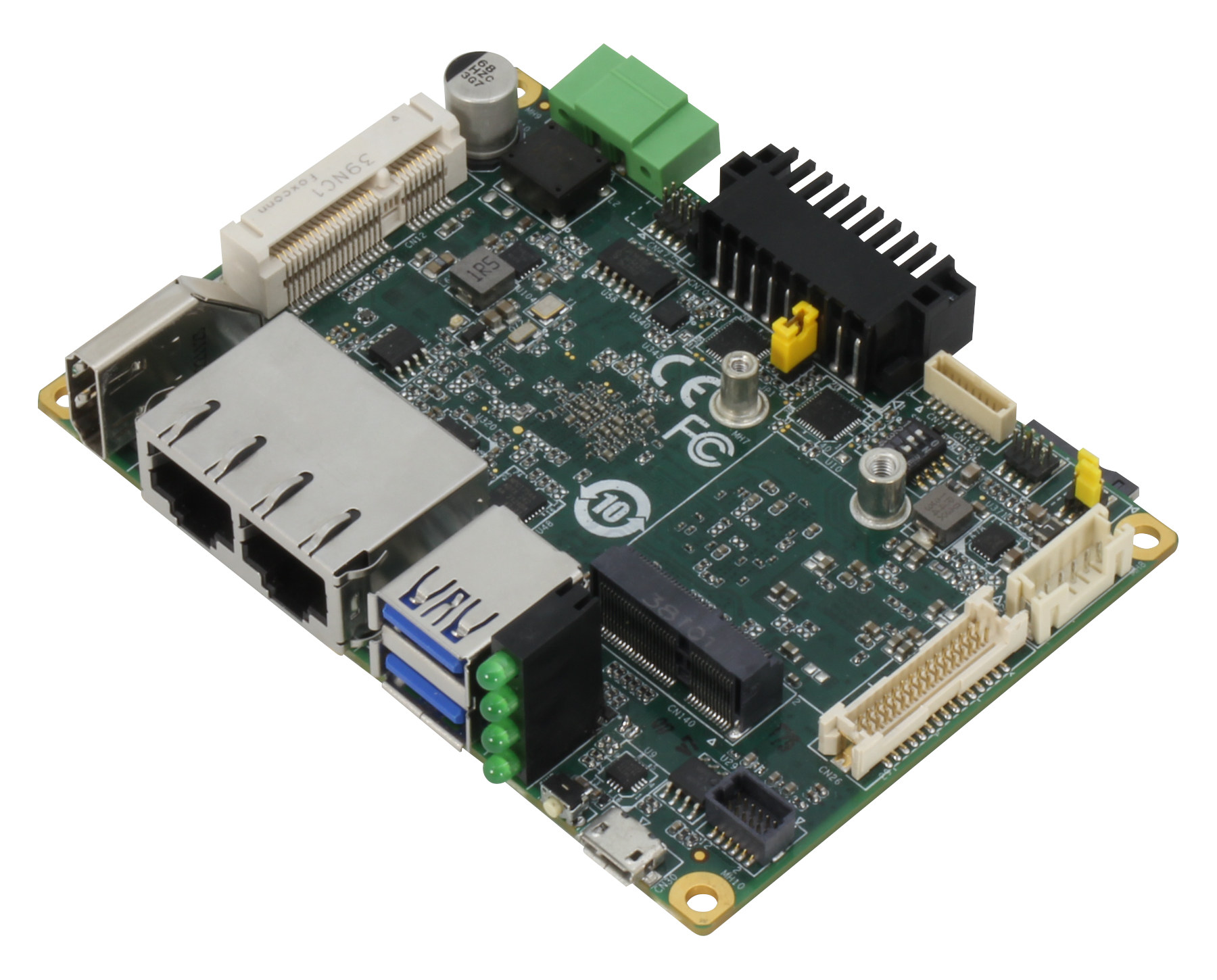ESPuno Pi Zero is a Raspberry Pi Zero-sized board based on an ESP32-C6-MINI-1 WiFI 6, BLE, and 802.15.4 wireless module and an SMPS that allows up to 60V DC input via a 2-pin terminal block. The board also features two USB-C ports, one connected to the ESP32-C6 and the other to a CH343P USB-to-serial chip, a 40-pin GPIO header, a Grove connector, a 3-pin terminal block for RS-485, DMX, Profibus, and a few buttons and LEDs. ESPuno Pi Zero specifications: ESP32-C6-MINI-1-N4 or ESP32-C6-MINI-1U-N4 SoC – Espressif Systems ESP32-C6 single-core 32-bit RISC-V clocked up to 160 MHz 320KB ROM, 512KB SRAM, low-power RISC-V core @ up to 20 MHz CPU Single-core 32-bit RISC-V clocked up to 160 MHz Low-power RISC-V core @ up to 20 MHz Memory/Storage – 320KB ROM, 512KB SRAM Wireless – 2.4 GHz WiFi 6, Bluetooth 5.0, and 802.15.4 radio (for Thread/Zigbee) Storage – 4MB flash Antenna ESP32-C6-MINI-1-N4 […]
Raspberry Pi CM4-powered CODESYS industrial controller supports EtherCAT, Modbus, up to 32 I/O modules
EDATEC ED-PLC2010 is an industrial controller powered by a Raspberry Pi CM4, supporting EtherCAT and Modbus interfaces, up to 32 I/O modules, and preloaded with CODESYS runtime for real-time core and visualization capabilities. DIN Rain-mountable Raspberry Pi CM4 industrial controllers are not exactly new, with products such as Modberry 500 CM4 and Edgebox-RPI4 announced shortly after the launch of the Raspberry Pi Compute Module 4 in 2020. More recently (2024), Seeed Studio introduced the reComputer R1113-10 IoT gateway, and Sfera Labs launched the Strato Pi Max. TECHBASE also upgraded the Modberry 500 with a more powerful CM5 module. EDATEC ED-PL2010 mostly differentiates itself by shipping with a licensed version of CODESYS runtime for industrial automation. It’s also possible with other vendors, but the license might need to be purchased separatly. EDATEC ED-PLC2010 specifications: SoM – Raspberry Pi CM4 SoC – Broadcom BCM2711 CPU – Quad-core Cortex-A72 SoC @ 1.5GHz GPU […]
Altech DO-1 Modbus monitor connects to up to 128 Modbus RTU/TCP devices
US-based Altech Corp has recently announced the DO-1 universal monitor for Modbus devices to enable companies to easily monitor, collect, and analyze their equipment and process data such as temperature, humidity, pressure, vibration, and energy usage without any subscription fees or licenses. The DO-1 is a vendor-agnostic solution that connects to up to 128 RTU-TCP Modbus devices, features 5GB of internal data storage expandable up to 128GB with a microSD card, dual Ethernet, and optional WiFi and Bluetooth connectivity. The device also implements dual power input with a 12V/24V DC input via a terminal block, and 5V via micro USB as power backup. Altech DO-1 specifications: Storage 5GB for data storage (I assume from 8GB eMMC flash) MicroSD card slot up to 128GB Networking 10/100Mbps Fast Ethernet RJ45 port (LAN1) Gigabit Ethernet RJ45 port (LAN2) LAN1 and LAN2 can be configured in switch or 2-port mode Optional WiFi 802.11 b/g/n […]
Stackable HAT brings high-resolution 24-bit ADC to Raspberry Pi (Crowdfunding)
Sequent Microsystems’ “Eight 24-bit ADC 8-layer Stackable HAT” is a Raspberry Pi expansion board designed for home automation projects. It is compatible with all Raspberry Pi models with a 40-pin GPIO header and features a stackable design that provides scalability for more complex setups. It includes eight independent 24-bit ADC channels, providing ultra-high resolution for measuring small analog signals accurately. It also features programmable gain amplifiers on each input channel for amplifying weak signals and optimizing the ADC’s input range. It is stackable up to eight layers, allowing for up to 64 differential analog inputs. It provides 4A continuous and 5A peak power to the Raspberry Pi via the GPIO header. It sends data via the I2C lines, leaving all other pins free for use. Also, it supports isolated RS485 communication for long-distance connectivity. The 8-layer Stackable HAT for Raspberry Pi is suitable for precision data acquisition applications, including industrial […]
Seeed Studio introduces ESP32-C3-based Modbus Vision RS485 and SenseCAP A1102 LoRaWAN outdoor Edge AI cameras
Seeed Studio has recently released the Modbus Vision RS485 and SenseCAP A1102 (LoRaWAN) outdoor Edge AI cameras based on ESP32-C3 SoC through the XIAO-ESP32C3 module for WiFi and the Himax WiseEye2 processor for vision AI. Both are IP66-rated AI vision cameras designed for home and industrial applications. The RS485 camera is designed for industrial systems and features a Modbus interface, making it suitable for factory automation and smart buildings. The SenseCAP A1102 uses LoRaWAN for long-range, low-power monitoring in remote locations. Both offer advanced AI for tasks like object detection and facial recognition. Besides its built-in RS485 interface, the Modbus Vision RS485 also supports LoRaWAN and 4G LTE connectivity via external Data Transfer Units (DTUs). With over 300 pre-trained AI models, the camera can do object detection and classification tasks making it suitable for industrial automation, smart agriculture, environmental monitoring, and other AI-driven applications requiring high performance. The SenseCAP A1102 […]
LumenRadio’s nRF52840 based Wireless Modbus module aims to simplify Modbus RTU installations
LumenRadio has recently introduced a Wireless Modbus (W-Modbus) module built around Nordic Semiconductor’s nRF52840 SoC. The module can connect up to 100 nodes, integrates a power amplifier with 100mW transmission power, and supports Bluetooth LE for smartphone connectivity. These features simplify Modbus RTU installations by eliminating traditional control cables, making them ideal for building and industrial automation applications. The company mentions two variants available for this module the ‘W-Modbus OEM Module’ which supports one Modbus client, and the ‘W-Modbus PRO OEM Module’ supporting up to sixteen Modbus clients. Both modules support self-healing, self-organizing mesh protocols that address the issues of network reliability and scalability in industrial environments. The module can also be used for remote monitoring and troubleshooting via smartphones. LumenRadio’s Wireless Modbus module specification Module – LumenRadio W-Modbus module SoC – Nordic Semiconductor nRF52840 CPU – 32-bit Cortex-M4 core with FPU @ 64 MHz Connectivity Bluetooth 5.4 (BLE, Bluetooth mesh, […]
Cytron IRIV IO Controller – A Raspberry Pi RP2350-based industrial I/O controller
Cytron IRIV IO Controller is an “Industrial Revolution 4.0” (or Industry 4.0) controller based on the Raspberry Pi RP2350 microcontroller that comes with an Ethernet port implemented through the W5500 chipset, and several isolated interfaces such as DI and DO up to 50V, two analog inputs, and RS232 and RS485 serial interfaces accessible through terminal blocks. Last year, the company introduced the Cytron IRIV PiControl industrial controller based on the Raspberry Pi CM4 module, and the IRIV IO Controller is a much cheaper solution using a subset of the features and a design that looks similar. IRIV IO Controller specifications: Microcontroller – Raspberry Pi RP2350A CPU Dual-core Arm Cortex-M33 @150MHz with Arm Trustzone for secure boot Dual-core 32-bit Hazard3 RISC-V @ 150MHz Up to two cores can be used at the same time Memory – 520 KB on-chip SRAM in 10 banks Storage – 2MB flash memory Networking – 10/100M […]
AAEON introduces NXP i.MX 8M Plus Pico-ITX SBC and mini PC designed for Edge AI industrial applications
AAEON PICO-IMX8PL is a Pico-ITX SBC built around the NXP i.MX 8M Plus Edge AI processor which the company has also released in an enclosed form as the SRG-IMX8PL mini-PC. Both are designed for industrial AIoT/IoT applications. The SBC features various connectivity options including dual Gigabit Ethernet, Wi-Fi/Bluetooth, 4G LTE, CAN-FD, Audio, LVDS, and support for popular protocols like Modbus, MQTT, and OPCUA. Whereas the mini PC sacrifices some I/O interfaces and the LVDS display output to enable wall or DIN rail mounting. Both products have wide operating temperature ranges, fanless designs, and compact form factors making them ideal for deployment in harsh industrial environments. All these features make this device useful for industrial automation, transportation, and digital signage. AAEON PICO-IMX8PL Pico-ITX SBC and RG-IMX8PL mini-PC specifications SoC – NXP i.MX 8M Plus AI SoC CPU Quad-core Arm Cortex-A53 processor @ up to 1.6 GHz Arm Cortex-M7 real-time core @ 800 […]


